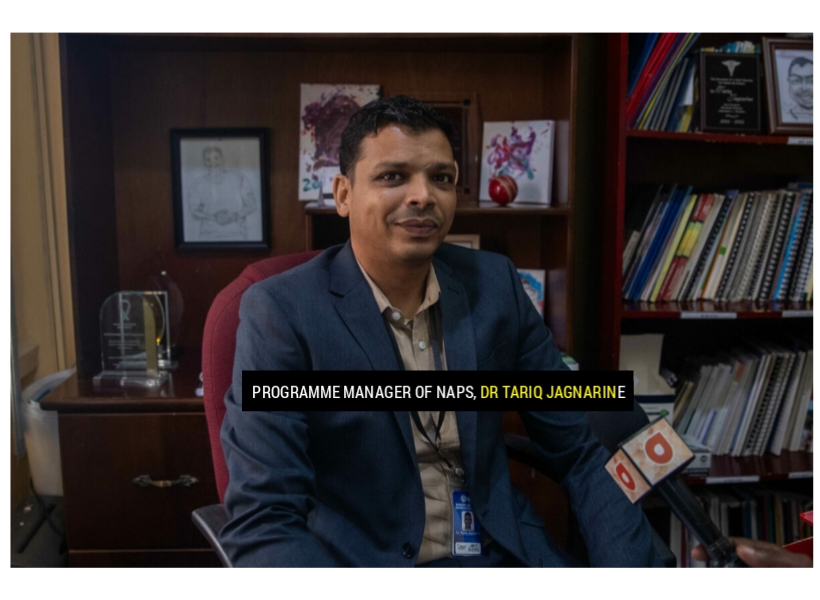Programme Manager of the National AIDS Programme Secretariat (NAPS), Dr Tariq Jagnarine said 93 per cent of persons infected with the Human Immunodeficiency Virus (HIV) know their status.
Speaking recently with the Department of Public Information (DPI), Dr Jagnarine said Guyana is close to meeting its 95-95-95 goal, set out by the Joint United Nations Programme on HIV/AIDS.
“There is the 95-95-95 goal that most countries are trying to achieve. We’ve been doing well. We have closely met our first 95. We’re currently at 93 per cent where persons living in Guyana who are HIV positive know their status, 93 per cent of them know their status.”
For 2021 and 2022, there was a slight increase in infection in men, which was some 1.5 per cent overall, and 1.3 per cent for women. He said the 15 to 25 age group is predominantly affected by HIV.
Deaths were minimal for the year which were directly related to tuberculosis, HIV, and mother-to-child transmission.
“There is a lot of work that needs to be done,” Dr Jagnarine said.
He said there is a rapid increase in cases of Sexually Transmitted Infections (STIs) including Syphilis, Hepatitis B, and Gonorrhea.
Interventions are being put into place to sensitise persons about HIV, prevention, treatment plans, getting tested for HIV, and much more.
He noted that a lot more needs to be done regarding prevention, risks, and getting tested for HIV. These include access to condoms, safe sexual practices, and HIV self-testing.
Dr Jagnarine said the face of HIV is changing as it is no longer life-threatening. Free treatment plans are also available.
“As long as you know your status, you can go on treatment, and stay on treatment… You can get as much as four to six months of supply of drugs. Home delivery is available. A family member can uplift the medications for the person as well,” the programme manager explained.
He noted that persons living with HIV should not be ashamed of their status.
“I hope that one day, we can have a society where we will have zero stigmas and discrimination. A lot of people are afraid to go to the health facilities within their communities. When you go, people see them and once people see them, that’s when they leave the clinic.”
The guidelines for HIV and other STIs were changed by the Centres for Disease Control and Prevention and the World Health Organisation last year.
The programme manager highlighted that new treatment options for HIV are available in Guyana which include Tenofovir, Lamivudine, and Dolutegavir (TLD).
TLD is a dilutable-based drug that has faster viral load suppression and is more convenient to take. It is a smaller tablet that is taken once per day and is associated with fewer drug interactions. This means that compared to other regimens, it is easier to administer TLD with the most commonly used medications.
“Your immune system is boosted rapidly and you start recovering faster. Most importantly, there are no major side effects… If you ask any person out there that has been in the fight who gets HIV four decades ago, when you took tablets for HIV, sometimes you had to take 11 or 12 huge tablets. Now, we have tablets that are a lot simpler, one tablet, simple, no side-effect,” Dr. Jagnarine added.
Pre-exposure prophylaxis (or PrEP) is a medicine taken to prevent HIV infection. PrEP is highly effective for preventing HIV when taken as prescribed. PrEP reduces the risk of getting HIV from sex by about 99 per cent.
Dr Jagnarine indicated that male circumcision can also help to reduce a male’s chances of acquiring HIV. (Department of Public Information)












